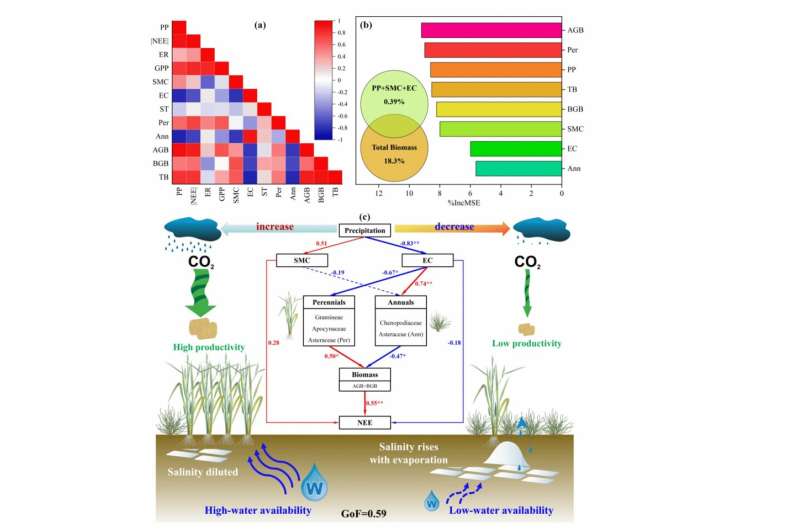In a world where nature’s balance hangs by a thread, a dedicated research team is peering into the intricate workings of wetlands. Their recent findings highlight how changes in plant diversity and weather patterns can influence these vital ecosystems, providing crucial insights for future conservation efforts.

Wetlands serve as indispensable allies in the fight against climate change. From filtering pollutants to storing carbon, they play a key role in maintaining ecological balance and supporting biodiversity. As temperatures rise, however, shifts in precipitation patterns dramatically affect these delicate ecosystems, impacting everything from plant species to the soil itself.
A passionate team of researchers, led by Prof. Han Guangxuan at the Yantai Institute of Coastal Zone Research, has been exploring these dynamics in the Yellow River Delta. Their studies at the Coastal Wetland Ecosystem observation station involved innovative experiments that varied the genetic diversity of Phragmites australis, a prevalent wetland grass. Their findings, recently published in Global Ecology and Conservation, shed light on how this genetic richness influences ecosystem functions.
Through a carefully designed common garden experiment, the team aimed to assess the relationship between the diversity of P. australis and its multifunctional benefits. Surprisingly, they discovered that while higher genotypic richness tended to promote some ecosystem functions, it began to hinder overall performance due to increased competition among the plant variations.
When setting different thresholds for ecosystem function indicators, the researchers noted a fascinating trend: as genotypic richness increased, it initially assisted in maximizing certain functions. However, at a high threshold, it caused a decline in the number of indicators hitting their peak—revealing a complex interplay between competition and ecological productivity.
In a related three-year study from 2020 to 2022, the team manipulated precipitation levels to see how it influenced net ecosystem CO₂ exchange and plant life. Their observations confirmed that wetlands acted as effective carbon sinks, primarily absorbing CO₂. Yet, fluctuations in rainfall significantly impacted soil salinity, ultimately reshaping the plant community composition.
Perennial plants like Phragmites australis flourished with increased rainfall, significantly raising biomass and CO₂ uptake. Conversely, drier conditions prompted salt-tolerant annuals, such as Suaeda salsa, to take over. These newcomers, however, brought lower biomass and reduced efficiency in primary productivity, further complicating the ecosystem’s health.
The team also investigated how groundwater levels influenced where plants thrived. Their findings showed that as groundwater levels decreased, it led to higher soil salinity and nutrient concentration, which in turn altered biomass distribution. This shift resulted in fewer diverse plant species and a transition from common reeds to salt-loving varieties.
Across different vegetation types in the Yellow River Delta, the researchers discovered notable variations in soil organic carbon (SOC) levels, with Suaeda salsa-dominated mudflats showing the highest SOC concentrations. The connection between soil moisture content and vegetation type proved pivotal for SOC levels, illustrating how these ecosystems remain intricately intertwined.
More information:
Liwen Zhang et al, Genotypic richness of Phragmites australis negatively impacts ecosystem multifunctionality in the coastal wetland of Yellow River Delta, China, Global Ecology and Conservation (2025). DOI: 10.1016/j.gecco.2025.e03609
If you would like to see similar science posts like this, click here & share this article with your friends!


